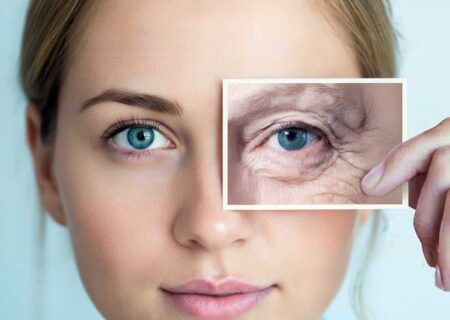Aging is a natural process that affects us all, and one of the most visible signs is the loss of skin elasticity. As we age, our skin tends to sag, resulting in wrinkles and a less youthful appearance.
Fortunately, there are various skin tightening treatments available that can help combat these effects and rejuvenate your skin. In this guide, we will explore the top 5 skin tightening treatments you should know about, with a particular focus on the comparison between two popular options: microcurrent therapy and radio frequency (RF) therapy.
1. Microcurrent Therapy
What is Microcurrent Therapy?
Microcurrent therapy is a non-invasive and painless skin tightening treatment that uses low-altitude electrical currents to energizing facial muscles. It is often referred to as a “natural facelift” because it helps improve muscle tone, lift sagging skin, and reduce the appearance of fine lines and wrinkles. Here’s how it works:
- Muscle Stimulation: Microcurrent devices deliver gentle electrical impulses that mimic the body’s natural electrical signals. These impulses stimulate the muscles, causing them to contract and tighten.
- Collagen Production: Microcurrent therapy also promotes the production of collagen, a protein responsible for maintaining skin’s elasticity and firmness.
- Improved Circulation: The treatment enhances blood circulation, which can lead to a healthier complexion and improved skin tone.
Benefits of Microcurrent Therapy
- Non-Invasive: Microcurrent therapy doesn’t require needles or surgery, making it a safe and painless option.
- No Downtime: Unlike surgical procedures, there is minimal to no downtime associated with microcurrent therapy.
- Natural Results: The treatment provides gradual, natural-looking results, as it works with the body’s natural processes.
- Customizable: Microcurrent therapy can be tailored to target specific areas of concern on the face and neck.
Microcurrent vs. Radio Frequency (RF): Which is Better?
Both microcurrent therapy and radio frequency (RF) therapy offer non-invasive approaches to skin tightening, but they differ in their mechanisms and outcomes. Here’s a comparison:
● Mechanism:
- Microcurrent Therapy: Focuses on muscle stimulation and collagen production.
- Radio Frequency (RF) Therapy: Uses heat to stimulate collagen production deep within the skin.
● Results:
- Microcurrent Therapy: Provides shorter-lived results as it focuses on facial muscles. It requires more frequent maintenance.
- Radio Frequency (RF) Therapy: Offers results that become more and more visible over time since collagen production usually happens about 4 weeks after the RF treatment. The results are longer lasting and only improve with use. .
● Downtime:
- Microcurrent Therapy: Virtually no downtime.
- Radio Frequency (RF) Therapy: Minimal downtime, with potential for slight redness or swelling right after treatement and for a short time.
● Sessions Required:
- Microcurrent Therapy: Typically requires a series of treatments for cumulative effects.
- Radio Frequency (RF) Therapy: Fewer sessions may be needed due to its more immediate impact.
Ultimately, the choice between microcurrent and RF therapy depends on your specific skin concerns, the level of invasiveness you are comfortable with, and the results you desire. They are also compatible and can provide even better results when used together. Consulting with a skincare professional can help determine which treatment is best suited to your needs or how to combine them.
2. Radio Frequency (RF) Therapy
What is Radio Frequency (RF) Therapy?
Radio frequency (RF) therapy is a popular skin tightening treatment that uses controlled heat energy to stimulate collagen production deep within the skin. This non-surgical procedure helps tighten loose or sagging skin, reduce wrinkles, and improve overall skin texture. Here’s how it works:
- Heat Energy: RF devices deliver radiofrequency energy to the skin’s deeper layers, resulting in controlled heating.
- Collagen Remodeling: The heat stimulates collagen production, leading to tighter, firmer skin over time.
- Safety: Many RF devices have built-in cooling mechanisms to protect the surface of the skin from excessive heat and RF is among the most clinically validated skin tightening solution today.
Benefits of Radio Frequency (RF) Therapy
- Effective Skin Tightening: RF therapy provides noticeable improvements in skin tightening , making it suitable for addressing moderate to severe skin laxity.
- Non-Invasive: Like microcurrent therapy, RF therapy does not involve surgery or needles.
- Minimal Downtime: While there may be slight redness or swelling, most individuals can return to their daily activities shortly after treatment.
- Long-Lasting Results: The collagenic recast process initiated by RF therapy continues to improve skin texture and firmness even after the treatment sessions are completed.
Microcurrent vs. Radio Frequency (RF): Which is Better?
As mentioned earlier, the choice between microcurrent therapy and RF therapy depends on various factors, including the severity of skin laxity and the desired outcomes. RF therapy tends to deliver more immediate and noticeable results for individuals with significant skin sagging. However, it’s essential to consider the level of invasiveness and the number of sessions required when making your decision. And remember: they can also be combined to maximize results.
3. Ultrasound Therapy
What is Ultrasound Therapy?
Ultrasound therapy, also known as Ultherapy, is a non-invasive skin tightening treatment that uses ultrasound energy to stimulate collagen production deep within the skin. It is particularly effective for lifting and tightening loose skin on the face, neck, and décolletage. Here’s how it works:
- Ultrasound Waves: Ultherapy devices deliver focused ultrasound waves to specific layers of the skin.
- Collagen Stimulation: The heat generated by the ultrasound waves triggers the body’s natural collagen production, resulting in firmer, more youthful skin.
- Visualization: Some Ultherapy devices provide real-time imaging, allowing practitioners to target the treatment precisely.
Benefits of Ultrasound Therapy
- Focused Treatment: Ultrasound therapy precisely targets the deep layers of skin without affecting the surface, minimizing discomfort and downtime.
- Non-Invasive: It does not require surgery or injections.
- Gradual Improvement: Results become more noticeable over several months as collagen production increases.
- Minimal Downtime: Mostly human can restart their normal activities instantly after treatment.
4. Laser Skin Tightening
What is Laser Skin Tightening?
Laser skin tightening is a non-invasive procedure that uses laser technology to stimulate collagen production and improve skin elasticity. It is effective for reducing the appearance of wrinkles, fine lines, and mild to moderate skin sagging. Here’s how it works:
- Laser Energy: Laser devices deliver controlled beams of light to heat specific areas of the skin.
- Collagen Stimulation: The heat from the laser promotes collagen production, which tightens and rejuvenates the skin.
- Precise Targeting: Different types of lasers are used for varying levels of penetration, allowing practitioners to tailor treatments to individual needs.
Benefits of Laser Skin Tightening
- Customizable: Laser treatments can be adjusted to target specific skin concerns and areas of the face and body.
- Minimal Downtime: Most individuals experience minimal redness or swelling, with no need for extended recovery periods.
- Versatility: Laser skin tightening is effective for various skin types and tones.
- Progressive Results: Collagen production continues to improve skin texture and firmness after the initial treatment.
5. Dermal Fillers
What are Dermal Fillers?
While not a traditional skin tightening treatment, dermal fillers deserve mention for their role in restoring volume and reducing the appearance of sagging skin.






